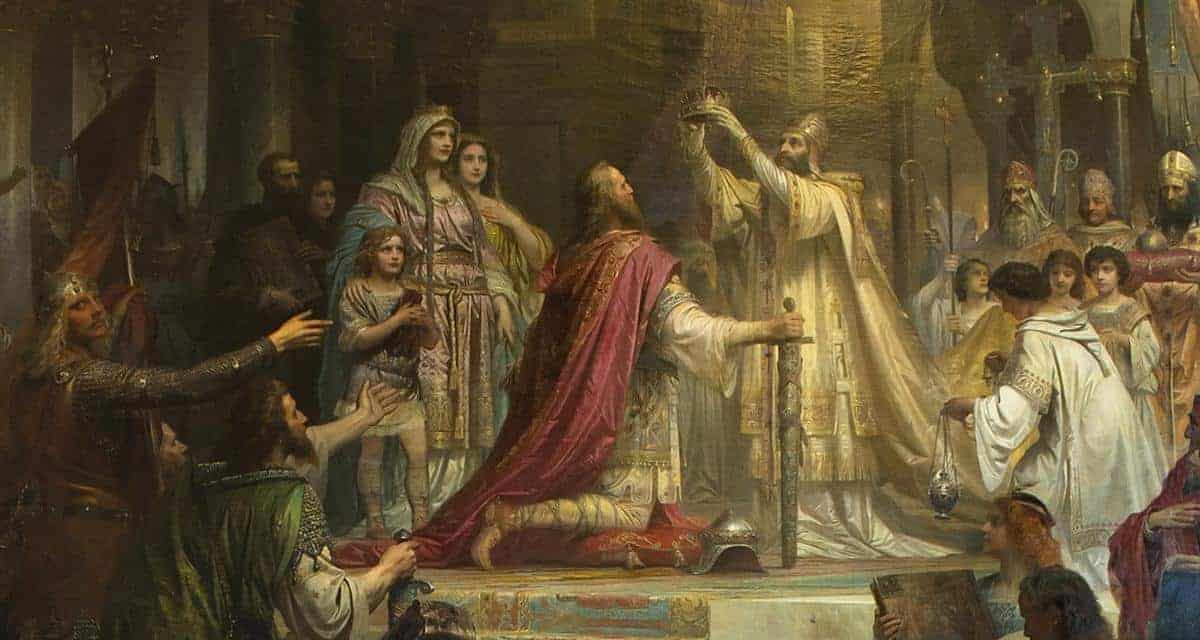The Holy Roman Empire was a collection of multi-ethnic territories in Central Europe. Pope Leo III technically formed it on Christmas Day 800 when Charlemagne was crowned emperor. It was a way of reviving the title of Emperor in Western Europe some 324 years after the fall of the Roman Empire in the West. Members of the Carolingian family held the title of Holy Roman Emperor until 888. It was claimed by numerous Italian rulers until 924 but was revived by the crowning of Otto I as emperor in 962.
The term ‘Holy Roman Empire’ was first used in the 13th century and while the office was supposed to be elective, it was typically held by dynasties. It was a great, sprawling and unique entity that was the heart of Europe for centuries. As well as being the home of many great ideas and inventions, it also led to the formation of various modern European states such as the Czech Republic and Germany.
The Holy Roman Empire’s relations with mighty nations such as France, Italy, Poland and Britain led to a large number of wars in the Middle Ages. The empire also stood shoulder to shoulder with European allies in the face of Muslim invasions. In this article, I look at 10 crucial battles in the history of the Holy Roman Empire.

1 – Battle of Stilo (982)
Also known as the Battle of Cape Colonna, this fight took place between the Holy Roman Empire under Emperor Otto II and the Kalbid Muslims of Sicily on July 13 or 14, 982. The Muslims were led by the Kalbid emir of Sicily, Abu’l-Qasim. Perhaps a few weeks before the battle, the emir had declared a jihad (holy war) against the Germans, but when he saw the size of their army, he had second thoughts and retreated.
Otto chased the Muslims, and once Abu’l-Qasim realized that his retreat had no chance of succeeding, he set up his army for an open field battle just south of Crotone at Cape Colonna. Otto was supported by the Lombards of Southern Italy, and the battle started well for the Holy Roman Empire as German heavy cavalry almost obliterated the center of the Muslim army. The emir died in the initial fighting, and while the loss of a commander normally damages an army’s morale, the death of Abu’l-Qasim galvanized the men who surrounded the German troops with a well-hidden reserve of cavalry.
The Holy Roman Empire’s army lost at least 4,000 men and two dozen nobles including Landulf IV of Benevento and the Bishop of Augsburg, Henry I. Otto managed to survive the slaughter, and he found refuge on a Greek merchant ship. He was forced to head north to Verona and news of the disastrous defeat traveled as far as England. It was one of the most significant early defeats suffered by the empire.
Otto had probably planned to reconquer Calabria from the Sicilian Muslims, but his failure led to a series of revolts against the empire instead. Pagan Slavs rose up in revolt of the emperor’s Christianization policies which led to a loss of imperial control of the area for several decades. Had Otto won the Battle of Stilo, there may have been a more stable empire for Otto III to rule. Instead, the teenage emperor fought to regain control with limited success. When Otto III died in 1002 with no clear heir, the empire was plunged into political chaos.

